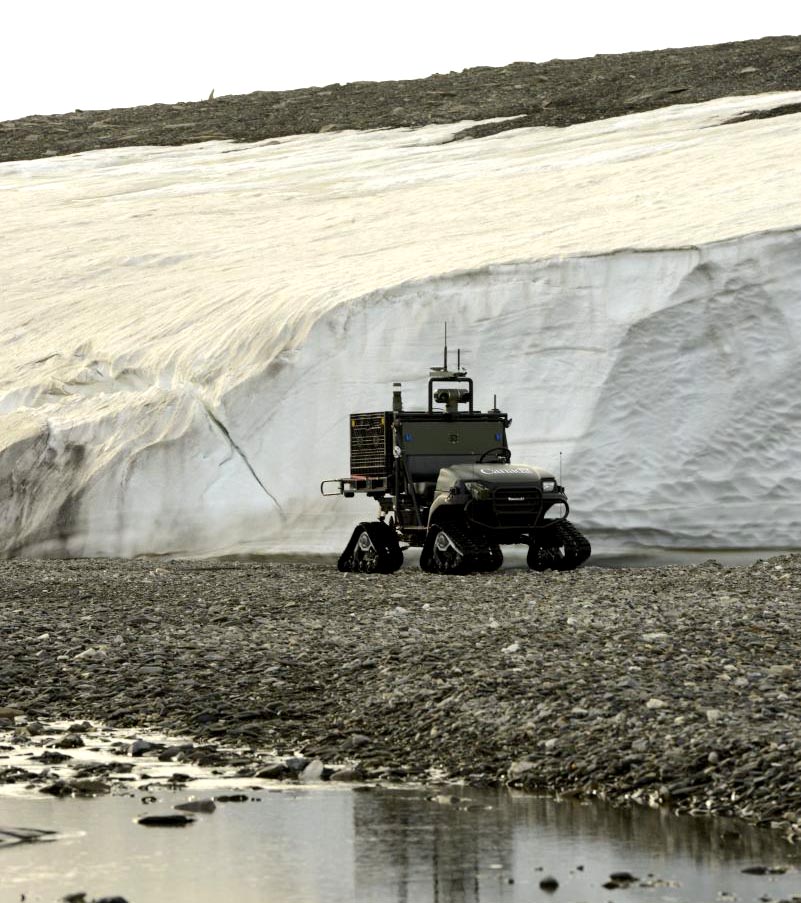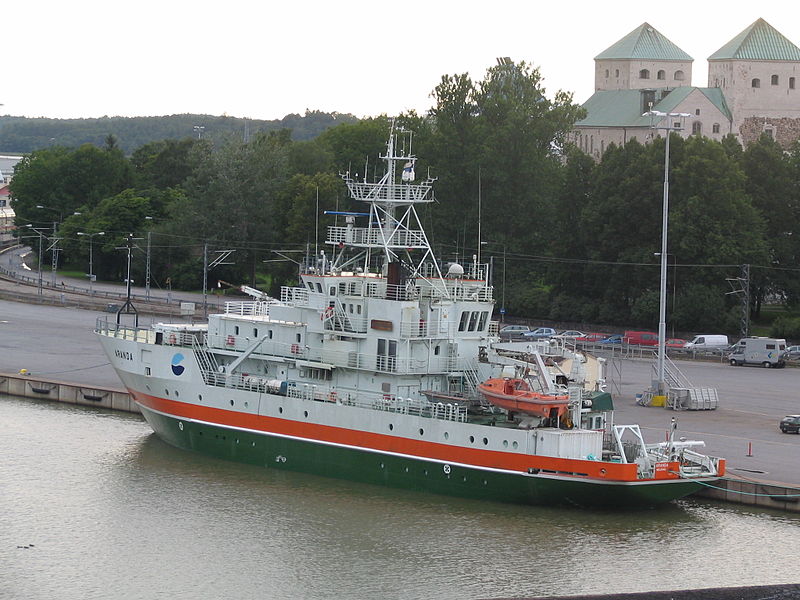
The rotary-wing UAV tested, and its view from the sky. Image: DRDC
“A lot of these systems — UAVs particularly, and rotor-wing (that is to say helicopters or quadrotors) — are even more sensitive. They require a good understanding of what they’re heading in. And by heading, that’s kind of the direction you’re facing,” said Monckton.
And because of those difficulties, finding headings for aerial drones in the Arctic requires stronger GPS systems to establish a “line segment” of locational data, ripped, according to Monckton, from a “crown” of satellites hovering on top of Earth.
In terms of weather conditions, the extreme sub-zero temperatures is devastating on a UAV when you mix in fog or clouds. While crisp cool air with clear skies provides excellent flying conditions, once you mix in ice fog, it becomes a major risk to small UAVs.
“The biggest risk in the Arctic is structural icing,” said Monckton who explained that water in the clouds is so cool that when “you strike it, it actually crystallizes on contact.”

At CFS Alert, the Multi-Agent Tactical Sentry (MATS) UGV travels through rough Arctic terrain during an autonomous path-following test without the use of GPS. The Canadian Armed Forces Joint Arctic Experiment (CAFJAE) 2014 tests autonomous technology for Arctic conditions and explores its potential for future concepts of military operations through experiments carried out August 2014 at Canadian Forces Station Alert, Nunavut. CAF and Defence Research and Development Canada’s (DRDC) JAE work will benefit multiple government partners and centers around a fictitious satellite crash with hazard identification, telecommunication and other search and rescue tasks. Image: DRDC
Unsurprisingly, the wings of a drone being enveloped in ice presents “a major impediment to general unmanned air operations,” Monckton said. In part, because “UAVs are too small to carry standard deicing equipment [as used] on a commercial aircraft. So that’s a major problem.”
For the project, DRDC took a previously manned helicopter and modified it into an unmanned vehicle. They had help from Calgary-based Meggit Canada for the project, a defence and security contractor also responsible for this armed training hexicopter.
As for ground drones, or unmanned ground vehicles, Monckton said weather and temperature were an afterthought. The real challenge, was the actual terrain.
“The arctic has a really peculiar surface,” said Monckton, adding that the high Arctic offers mostly marshlands, rocky outcrops, or elevated permafrost that produces spiky formations. “So the UGV was kind of going between easy riding on sloppy stuff and then getting pounded to pieces on the rough frost boils.”






